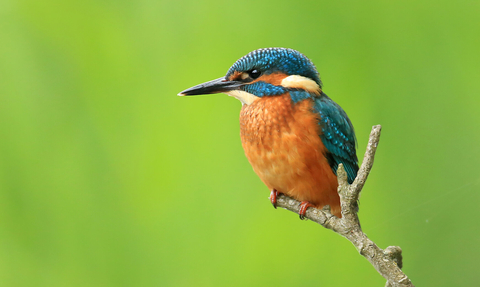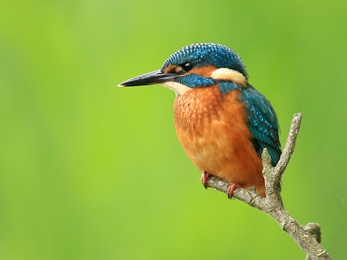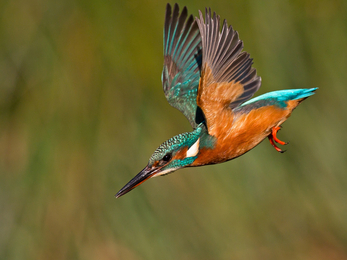
Jon Hawkins - Surrey Hills Photography
Day 4: Freshwater Birds
Welcome to day 4
Today we're going to learn about three of the fascinating birds you might spot in Dorset's freshwater habitats this spring. Secluded spots along Dorset's rivers, including the Stour, Frome and Hooke, make for great birdwatching spots where you might glimpse these species.
Kingfisher
Alcedo atthis
Statistics
Length: 15-17cm
Wingspan: 25cm
Weight: 40g
Average lifespan: 2 years
How to identify
The striking mix of its bright-blue back and metallic copper breast make the kingfisher unmistakable. Males have an entirely black bill, females have an orangey-red patch at the base.
Did you know?
There are about 90 species of kingfisher around the world, most of which have brightly coloured plumage. The Australian kingfisher - the familiar, laughing kookaburra - is the heaviest of all the kingfisher species.
Coot
Fulica atra
Statistics
Length: 36-40cm
Wingspan: 75cm
Weight: 800g
Average lifespan: 5 years
How to identify
The coot can be distinguished from the similar-looking moorhen by its larger size, entirely black body (with no white patches), and bright white bill. Coots spend much of their time away from the bankside, diving for food.
Did you know?
The saying 'bald as a coot' actually refers to the white patch, or 'frontal shield', just above the bird's bill, rather than lack of feathers. Coots are also known locally as 'bald coots' and 'white-faced divers'.
Grey Wagtail
Motacilla cinerea
Statistics
Length: 18-19cm
Wingspan: 26cm
Weight: 18g
Average lifespan: 3 years
How to identify
The grey wagtail has a very long, black-and-white tail, a yellow rump and a yellow belly. It is grey above with black wings. Males have a grey face with a black throat bib and a white 'moustache'. The similar yellow wagtail has a shorter tail and an olive-green back, and does not have a black bib.
Did you know?
Grey wagtails eat ants and midges that they find beside rivers, and snails and tadpoles they find in shallow water. They nest near the water in hollows and crevices lined with moss and twigs.








